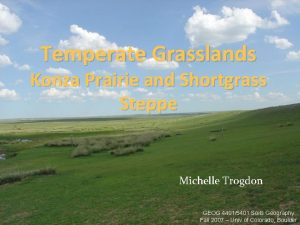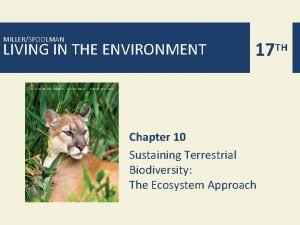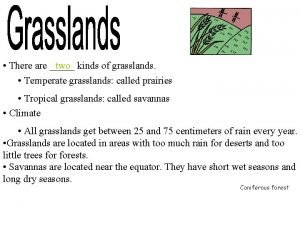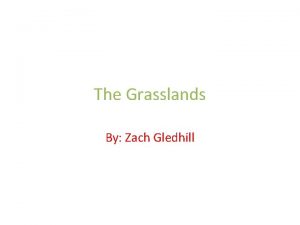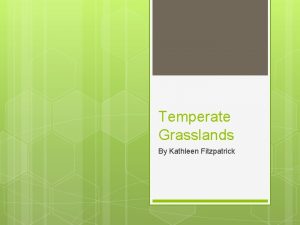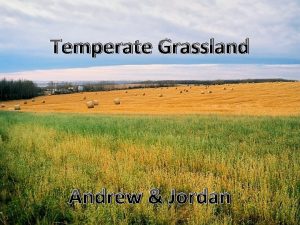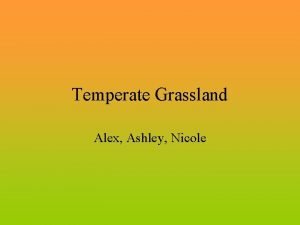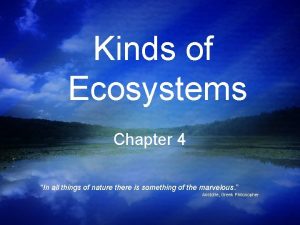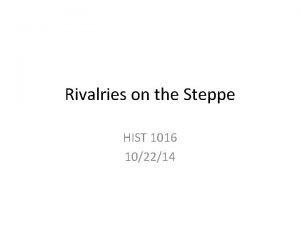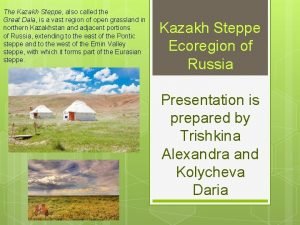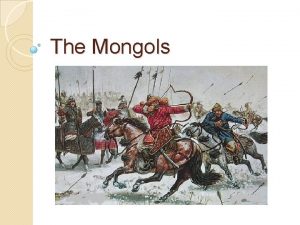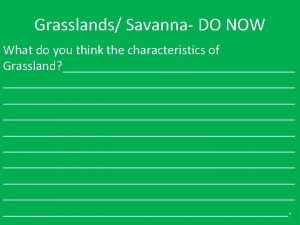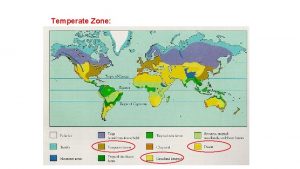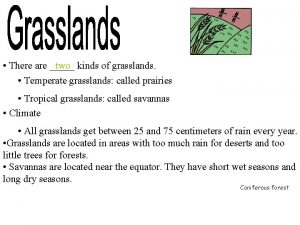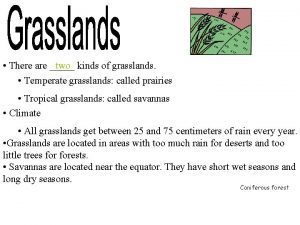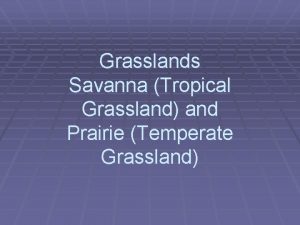Temperate Grasslands Konza Prairie and Shortgrass Steppe Michelle










- Slides: 10

Temperate Grasslands Konza Prairie and Shortgrass Steppe Michelle Trogdon GEOG 4401/5401 Soils Geography Fall 2007 – Univ of Colorado, Boulder

Konza Prairie 3, 487 ha of native tallgrass prairie in Flint Hills, KA Shortgrass Steppe 6, 280+ ha of shortgrass rangeland in the piedmont of eastern CO

Konza Prairie: • Flint Hills- steep sloped and overlain with shallow limestone soils • unplowed tallgrasses • soil depth varies with topo • silty clay loams • multi level ecological studies of abiotic/biotic factors influencing ecosystem Dominant Hypothesis: Fire, grazing, and climate variability are essential and interactive factors responsible for the structure and function of tallgrass prairie.

Fire: • seed predation of vertebrates and invertebrates • fire frequency and topographic variation • vertebrates consumed more seeds • fire decreases dead plant matter (litter) which increases potential for rodent seed predation • seed preference, large seeds all yr, millet, C 4 population?

Fire: • essential to mesic grasslands • managed to limit tree growth and promote C 4 grasses • changes light and soil environment of plants • changes reduce biodiversity • changes soil temperature, increases hydrocarbons, water infiltration • difficult conditions for plant succession, rapid regrowth

Grazing: • two forbs (flowering plant) and one C 4 • grazing tolerance • bison graze perennials increasing species diversity • grazing (bison) negative affects on biomass and reproduction • highest grazing tolerance, smaller reductions in biomass, growth rates, and reproductive effort

Grazing: • human controlled cattle grazing • reintroduction of bison • bison vs. cattle • grazing (bison) negative affects on biomass and reproduction • responses indicate population differentiation and genetic adaptation to grazing pressures

Shortgrass Steppe: Dominant Research themes… • factors regulate ecological structure and function over space and time • how do these factors with abiotic/biotic vary spatially and temporally? • what are the abiotic/biotic factors that determine vulnerability of the ecosystem to change?

Grazing: • historical cattle grazing • B. gracilis C 4 70 -80% community • newly grazed responds rapidly • dominates long-term grazed • root biomass greater at grazed sites • root organic matter inputs influence soil organic carbon • grazing decreases biodiversity of grazed plants

Summary: Temperate Grassland • soil development is inhibited by fire, climate, and topo depleting organic matter, nutrients • fire alters soil conditions, difficult for plant succession reduces plant diversity, optimal foraging • grazing induces genetic adaptation, rapid regrowth is favored • C 4 grasses fair better under these conditions
